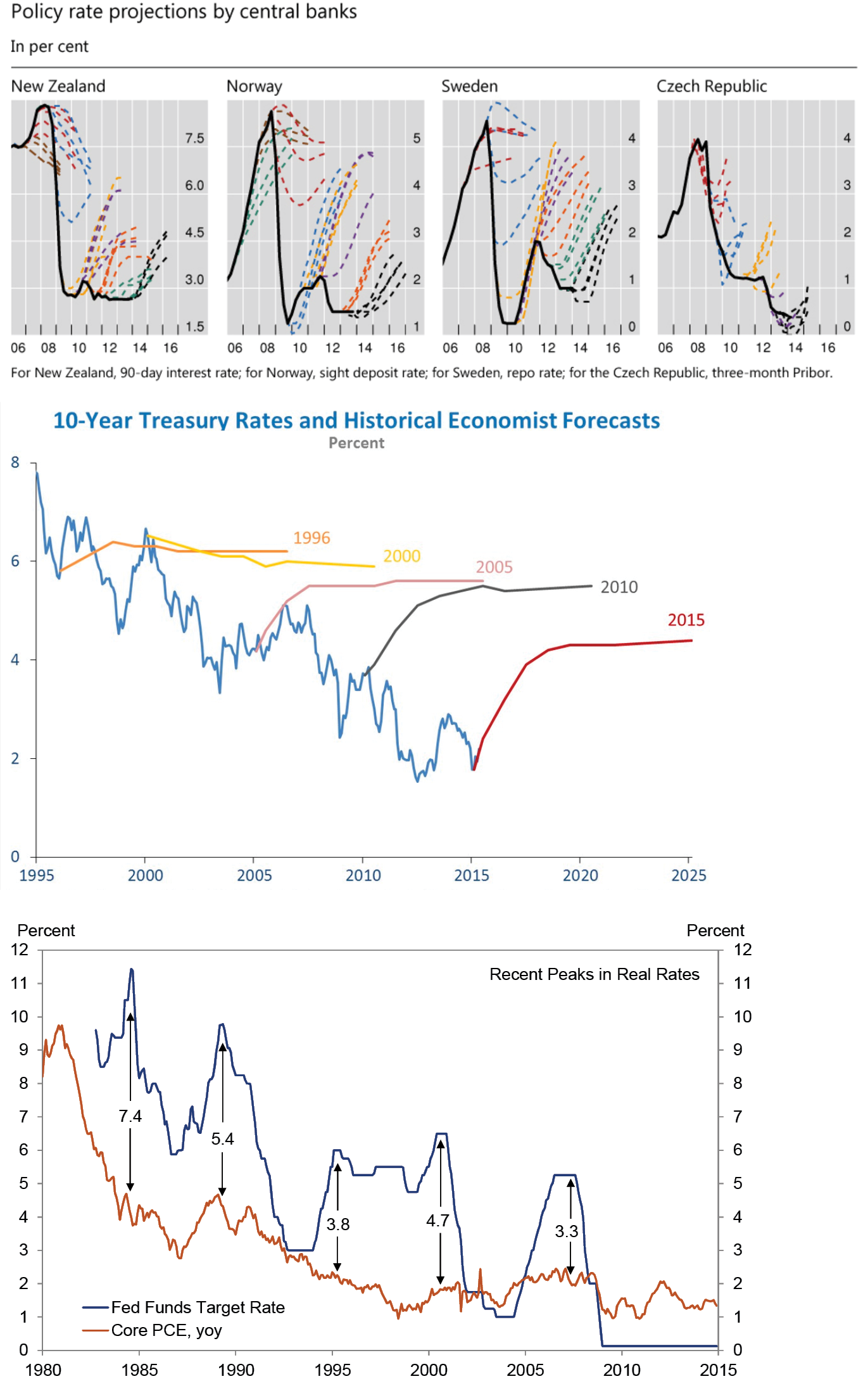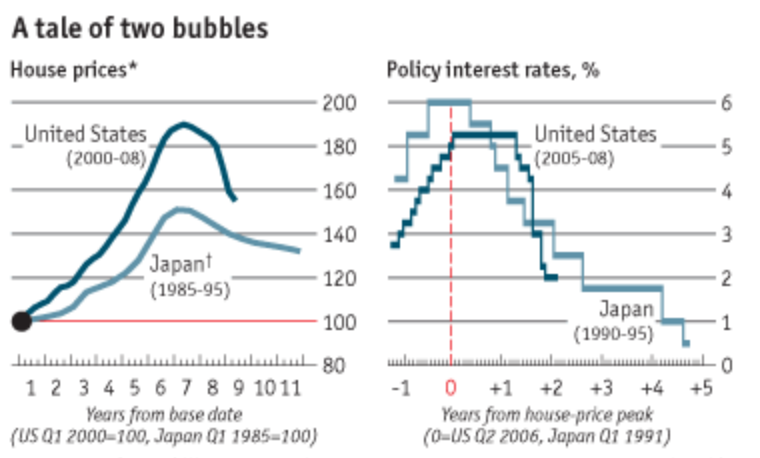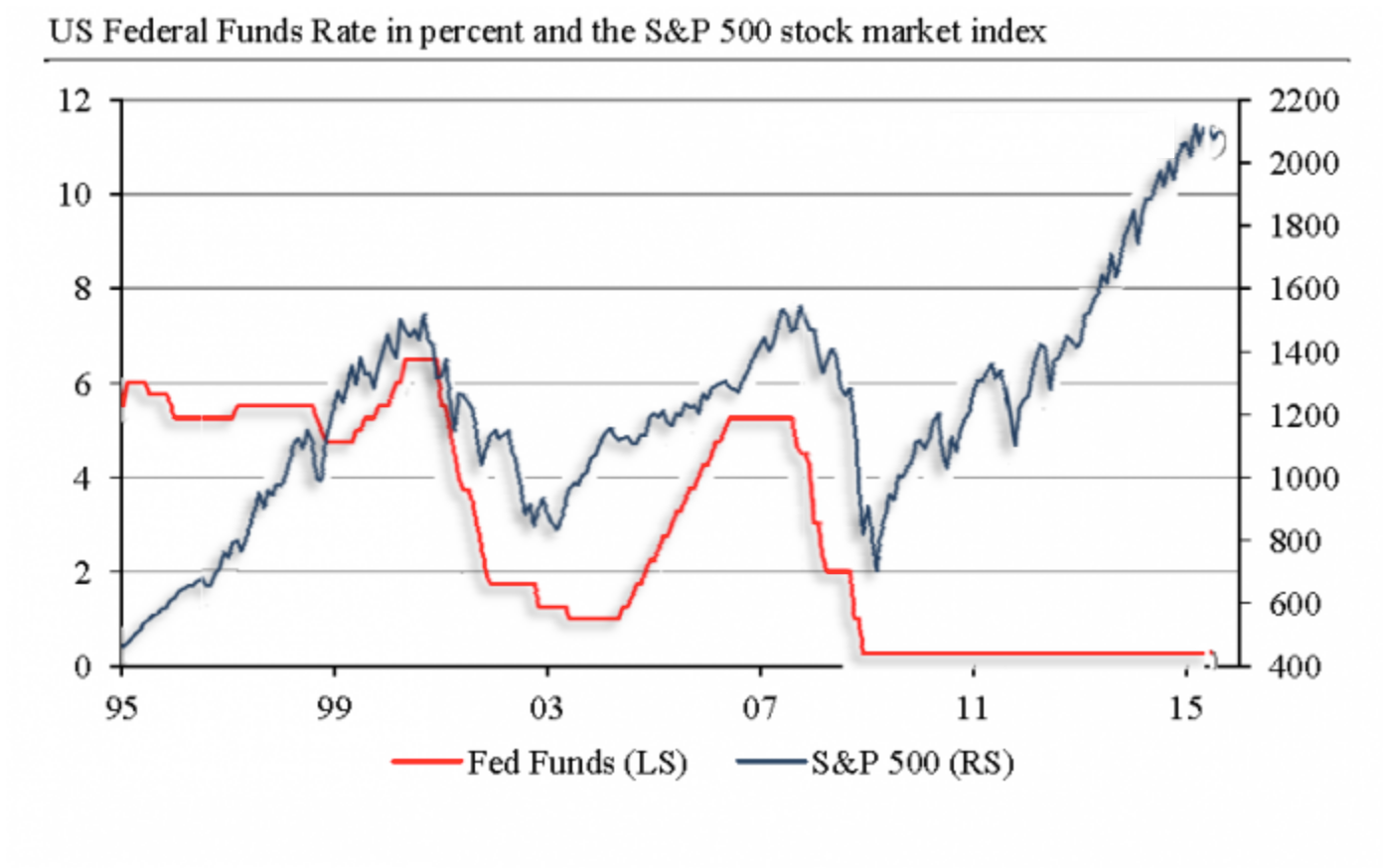A snarky but accurate description of monetary policy over the past five years is that the Federal Reserve successfully replaced the technology bubble with a housing bubble.
Downturns happen … When they happen, the normal playbook is to cut interest rates by 500 basis points, but there’s not going to be that kind of room.
Having been forced into being the only game in town, they (central banks) now find that their destiny is no longer entirely or even mostly theirs to control. The legacy of their exceptional period of hyper policy experimentation is now in the hands of governments and their political bosses.
As a result of the large deficits and growing national debts created by excessive fiscal policy, the burden of economic policy has largely shifted to central banks and their monetary policy, which has become “the only game in town.” Initially, central bankers were reluctant to take on this role, but, over time, they have grown worryingly accustomed to it. Monetary policy goals progressively shifted from their traditional mandate of fighting consumer goods inflation – which has been pushed down naturally by automation and globalization – to stimulating the economy in times of recession and bubble bursts.
This stimulation was achieved by the traditional monetary mix of sharply depressing interest rates and injecting liquidity. This relieved pressure on indebted consumers, the state, and, most of all, over-leveraged companies and financial actors. As the crises were alleviated, interest rates were progressively raised, but each time the new status quo interest rate was lower than it had been before.
In fact, the central banks began projecting future rate raises that failed to materialize to the extent announced. That does not mean that raises did not occur, but rather that they systematically were lower than announced. Central banks tried to have their cake and eat it too by projecting an image of responsible monetary orthodoxy while in fact stimulating the economy as much as they could to compensate for the lack of fiscal policy options. This disconnect has become abundantly clear. Cornucopia
There is no doubt these interventions did alleviate cyclical pain, but they also prevented some necessary restructuring, and propelled one bubble valuation after another. The LTCM hedge fund and Asian crises of 1998 were followed by the dot com bubble, which ultimately morphed into the real estate uber-bubble.
One of the mechanisms through which lower interest rates stimulate the economy is indeed rising home prices. The lower interest rate enables home buyers to borrow more money while paying the same amount of interest. This leads to higher bids on properties, as people compete to the maximum of their ability to acquire the basic need of a home. While these may create a feel-good wealth effect, the value of the house having increased relative to the income of the household, this is yet another long-term source of social dissent.
To understand the long term negative social effect, it is worth remembering that these increases are for the same goods, i.e., that they are best understood as asset price inflation. As with all inflation, consumers end up paying more, particularly affecting the low and middle classes, which are unable to “produce” real estate but constrained to consume it at a higher price. Homeownership is ubiquitous among the wealthiest, but far less so among the lower income deciles. With property prices up, rents go up, taking a disproportionate toll on the lowest budgets. As prices go up, prospective homeownership becomes less attainable. As for homeowners, single-dwelling homeowners do not benefit from the increase in rent. Their fixed mortgages payments are unaffected by the rising rental market or property value. The real ‘winners’ are landlords who own many properties. They will take in higher rents and see capital appreciation on their holdings.
Since the financial crisis of 2008, which briefly exposed the over-financialization of the economy and the aberrant price of real estate, even more massive monetary policy, referred to as quantitative easing, or QE, was undertaken. This was necessary at the time to avoid a system-wide collapse. But it once again reflated bubbles, to the point that real estate prices caught back up and have now exceeded the highs reached at the peak of the last bubble, while the valuation of the stock market is now sky-high.
After the Volcker years, where the Fed proved its credentials by setting interest rates high enough to cut inflation, monetary policy entered a new world. The fundamental issue was that expansionary fiscal policy and its concomitant deficits were increasingly recognized as unsustainable. Deficits had been growing steadily in the Western world, with increased social spending. This spending was critical to preventing populist unrest, or as we now see, merely delaying it. This was recognized, for instance by the Maastricht treaty “forbidding” excessive deficits. This framework created a natural vacuum for monetary policy to fill, be it in Europe with interest rate reductions in all, but especially in peripheral countries, as well as in the U.S. It all seemed benevolent at the time, as Alan Greenspan and Bill Clinton entered into a deal to cut interest rates in exchange for lower fiscal deficits.
What was missed is that, overwhelmingly, the deficit reductions were not sufficient to materially diminish the national debt over the long term and “recover” the fiscal policy tool. Any margin reacquired would quickly evaporate. In the meantime, lower interest rates encouraged misallocation and bubbles. Indeed, when the LTCM crisis hit in ’98, the reaction was mainly to cut interest rates and “reflate” a bubble that morphed into the internet craze. When that bubble burst in 2001, interest rate cuts were again at the forefront, reflating a real estate bubble. By this time neither traditional fiscal policy nor monetary policy had enough firepower even to postpone the problem, let alone solve it.
This “traditional” monetary and fiscal policy process thus had to be abandoned with the financial crisis of 2007-09 and the sovereign spread crisis in Europe, or at least to be complemented by something more drastic. Fearing a financial system breakdown79, ineffective monetary policy and unsustainable fiscal stimulus, the central banks embarked upon an “unorthodox” policy referred to as quantitative easing. It involved massive acquisitions of all kinds of financial assets, starting with government bonds, but including corporate bonds and mortgage back securities. The object was to increase the money supply in order to prevent a liquidity crisis and to support economic activity.
This previously unheard-of policy had two key consequences. First, the massive acquisition of assets meant that assets price rose inexorably. The rise of asset prices overwhelmingly benefited those who held assets. In other words, the distributional effect of QE systematically favors the wealthiest. Central banks may point out that the indirect effect favors everybody (but then it would indirectly also favor asset prices), yet there is little escape from this reality.
And second, the arbitrary decision to de facto create this much more money has pierced the “veil” and led to questions about the nature and sustainability of money. There is little doubt that this has fed the “real asset” price bubble and the cryptocurrency mania that has unfolded as people have been driven to seek alternatives to easily manipulated fiat money.


